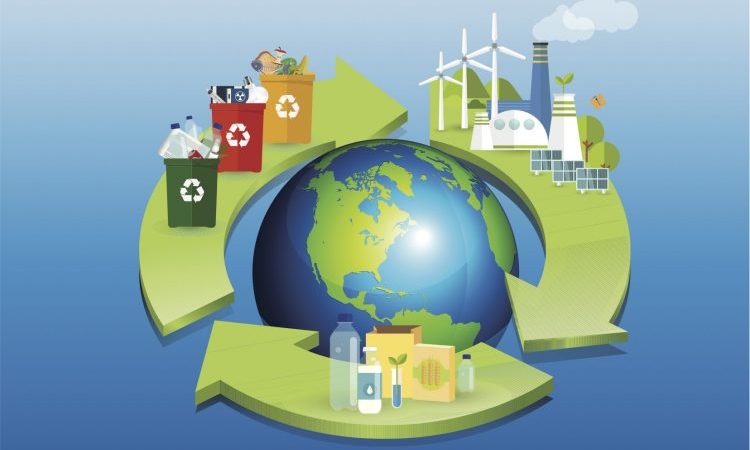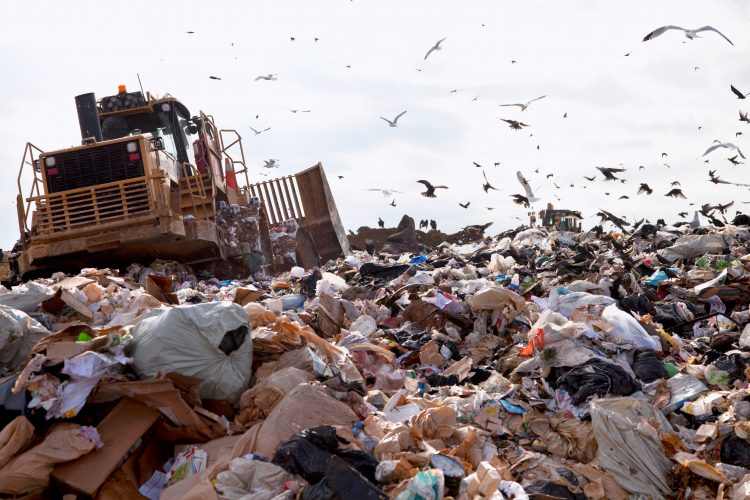A circular pathway for the food supply chain
- Like
- Digg
- Del
- Tumblr
- VKontakte
- Buffer
- Love This
- Odnoklassniki
- Meneame
- Blogger
- Amazon
- Yahoo Mail
- Gmail
- AOL
- Newsvine
- HackerNews
- Evernote
- MySpace
- Mail.ru
- Viadeo
- Line
- Comments
- Yummly
- SMS
- Viber
- Telegram
- Subscribe
- Skype
- Facebook Messenger
- Kakao
- LiveJournal
- Yammer
- Edgar
- Fintel
- Mix
- Instapaper
- Copy Link
Posted: 25 April 2019 | Dr Manoj Dora (Brunel University London), Tez Padhee | No comments yet
Manoj Dora and Tez Padhee share their passion for investigating ways to facilitate a sustainable global food supply for future generations; highlighting how we can move from a linear to circular economy.


There is enough food produced today to adequately feed the global population, yet around 800 million people are undernourished, while two billion are overweight or obese. The cost of this damage to human health and the environment is far greater than the profits made by the farming industry. When food is wasted, so, too, are the resources, money and labour that go into producing it. According to WRAP (the Waste and Resources Action Programme), UK households generate 8.3 million metric tonnes of food and drink waste each year, valued at a minimum of $18.6 billion and responsible for about three percent of domestic greenhouse gas emissions. Similarly, about 150,000 tonnes of food is wasted in US households each day and more than 10 kilograms of food is wasted per person each month. Twenty percent of the food bought by the average American is never eaten; this amount alone could feed the 46 million Americans (ie, one in seven) who use food banks.
Hunger is not necessarily a food problem; it’s a logistics problem, it’s a governance problem, it’s a human problem
If food waste was a country, it would be the third largest emitter of CO2, after China and the US. Current food production and consumption habits have negatively impacted the environment – causing eutrophication and increased CO2 emissions, as well as massive amounts of food waste. Food waste has serious consequences for the farming community, especially those smallholder farmers and their livelihood – 500 million of that community produce 80 percent of the food consumed in the developing world. Sadly, this inevitably affects the world’s poorest and most malnourished people: nearly 80 percent of the world’s poor live in rural areas and thus largely work in agriculture.
Half of the world’s population is malnourished and hunger remains on the rise: one in three women is anaemic, and food insecurity is demonstrated in a rise in obesity. The food sector currently accounts for approximately 30 percent of greenhouse gas emissions and 70 percent of freshwater withdrawal. These statistics serve to illustrate the extent to which our modern-day food systems are riddled with inefficiency and ineffectiveness. Hunger is not necessarily a food problem; it’s a logistics problem, it’s a governance problem, it’s a human problem.
Circular economy is the solution
There is growing consensus that the only way forward to ensure sustainable production and development is to switch from our current industrial ‘linear’ model to a circular economy (CE), offering tools to reduce the waste generated in the food chain. This includes the use of food by-products and waste, and nutrient recycling to establish an efficient and sustainable food supply chain. Our current model is linear – ie, take, make, use, dispose.
We ‘take’ raw materials from the environment, ‘make’ something, ‘use’ or don’t use it, and finally ‘dispose’. For example: in a supermarket, food that is still good but needs to be removed from shelves – often due to inventory or overstock reasons – typically heads to the landfill. We need to adopt a new approach to avoid this wasteful situation that challenges economies across the globe. A circular approach – reuse, recycle, remake, redistribute – aims to ensure zero food waste in the food chain. For instance, misshapen or slightly blemished fruits and vegetables that don’t meet the strict cosmetic requirements of supermarkets constitute a major part of the food waste problem, but can play an important role in circular economics. Retailers typically accept only about 60-80 percent of farmers’ produce due to cosmetic reasons, so a system is needed that includes supportive organisations to make use of these rejected products.
Overcoming obstacles
There is a general lack of knowledge surrounding the opportunity cost of food waste across the supply chain, which could be integrated into a productive CE cycle. The opportunity cost in this scenario is the value of the best forsaken alternative. For instance, farmers do not have information about the opportunity cost of the food waste that goes to landfill, rather than being used for energy, compost or animal feed. Farmers would benefit from information regarding how to cost-effectively use, re-use or recycle food waste. Additionally, farmers need to identify and engage with other supply chain members to make best use of the resources. To establish synergistic collaborations where waste and by-products can be exchanged, sold or transferred, it is crucial to determine how stakeholders can work together and develop potential applications for unwanted materials.


If food waste was a country, it would be the third largest emitter of CO2, after China and the US
An additional means of addressing the problem has centred on undertaking studies that focus on the demand-side aspects of sustainable consumption and end-consumer behaviours, such as food selection, physical flows and waste generation at household level.
There is a need to address sustainability issues from the supply-side of food chains by mapping food waste scenarios and potential by-product synergies in relation to farming, processing, and retailing. Moreover, we need to develop innovative business models that can incentivise food supply chain members to follow circular strategies. Directing food waste into a landfill is waste of a valuable resource. With appropriate technology and strategy, food waste can generate renewable energy, enhance the soil as a fertiliser, and feed animals.
A change of mindset
Eliminating food waste is economically plausible and can unleash new opportunities for businesses. We need to change our approach and start seeking more opportunities to reduce food waste. We must acknowledge that food waste is a lost economic opportunity and actively investigate where food waste may be occurring. We must help redesign the supply chain to enable it to better accommodate the re-integration of food that would otherwise be wasted into the production cycle. It’s a responsibility for all food distributors, supermarkets, and importantly consumers.
Possible circular pathways for the food supply chain:
- Food waste could be used as a source of renewable energy and provide food producers an excellent source of energy for their production process
- Food waste could be used to produce bio-fertiliser; returning nutrients to the soil and as biofuel. It has been estimated that up to 90 percent of waste could be recycled. With these initiatives, industries could increase their profitability as well as sustainability credentials.
- Surplus food could be sent to charities, food donation partners and social enterprises for vulnerable and needy communities
- Employees could be given discounts on food that is on its last day of shelf life. This could be used as an additional incentive for the workforce and keep them motivated at work.
- Food waste could be a great source of animal feed for livestock.
There are significant developments, in both a technical as well as business-related sense, with potential to be applied in the food supply chain towards a circular pathway. The following are some examples of major advances:
- Anaerobic digestion – a process of in-vessel treatment of waste is an innovative technology that has been developed in recent years. This technology provides a large-scale solution to organic waste and converts greenhouse gases such as methane into energy.
- Waste to energy technology – such as gasification, pyrolysis and plasma arc gasification have been developed in recent years and are being used by industry leaders.
Besides the technical advances, important business management practices have been introduced in sustainable business management. For instance, closed-loop supply chain and reverse logistics integrate components such as product design, performance measurement, and value recovery measures across the food value chain to manage waste efficiently. This encourages food supply chain members to contribute to a more sustainable economy by building waste reduction into design, and deliver improved customer satisfaction. Likewise, supply chain integration and collaboration among chain members in the food sector is an increasingly popular means of administering circular practices through information sharing and joint strategy development. Moreover, the Internet of Things and Big Data is playing a significant role in a circular economy through data-driven logistical planning.
Finally, a good understanding of the data and waste streams is vital to making decisions for establishing a circular economy. Hence, there is a need for more research, accurate measurement indicators and finally an easy-to-use practical tool kit for use by food supply chain members. Universities and research institutes will have to play a significant role in developing this area. Furthermore, training and appraisal for different stakeholders in circular economies can be vital tools and universities could provide such services to members.
By 2030 we will need two planets to meet the world’s demands and by 2050, three planets! It’s time to act. Finding solutions to provide nutritious food to nearly 10 billion people by 2050 without destroying our planet is one of the greatest challenges of our generation.
About the authors:




Issue
Related topics
Environment, Food Waste, Processing, Regulation & Legislation, Research & development, Supply chain, Sustainability, Technology & Innovation, Trade & Economy









